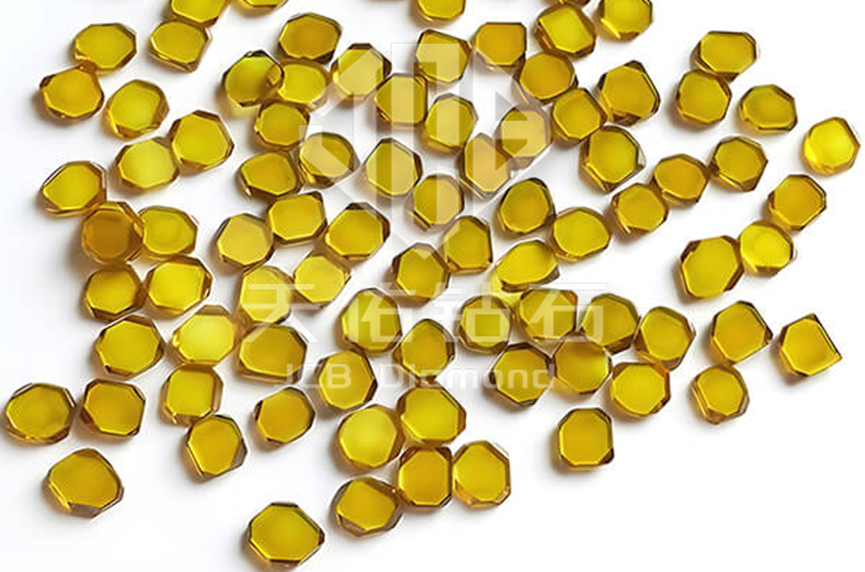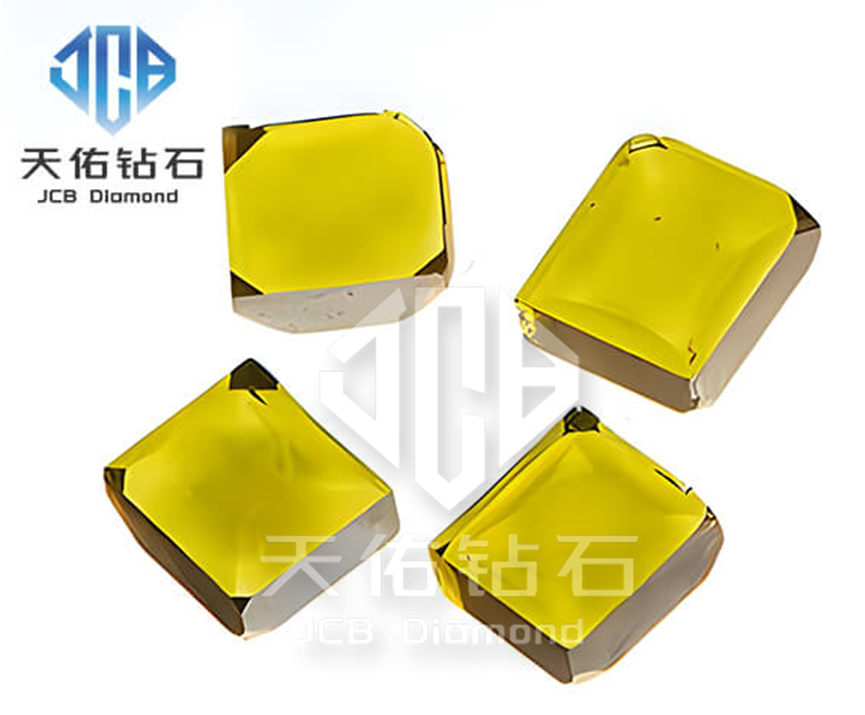Properties
Ultra-high hardness: Diamond is the hardest substance known in nature. It is composed of saturated and directional covalent bonds. Its crystal structure is stable, which makes diamond single crystals extremely hard and wear-resistant. It can resist wear and scratches from various external forces.
Good thermal conductivity: It has extremely high thermal conductivity, which is several times or even higher than copper. It can quickly conduct heat and has excellent performance in heat dissipation. It can effectively solve heat dissipation problems in electronic devices and other fields.
Excellent optical properties: It has good light transmittance in the visible light to infrared light band, and can be used to manufacture optical windows, lenses and other optical components. At the same time, its high refractive index can effectively refract and reflect light, and can be used to make key components in high-end optical instruments.
High chemical stability: At room temperature and pressure, diamond single crystals have strong chemical stability, are not easily corroded by chemicals such as acids and alkalis, and can maintain stable performance in harsh chemical environments.
Excellent electrical properties: It has wide bandgap, high carrier mobility, high breakdown electric field and other characteristics. It shows great application potential in the semiconductor field and can be used to manufacture high-performance semiconductor devices, such as high-power, high-frequency, and high-temperature electronic devices.
Preparation method
Static pressure catalyst method: Under the condition of thermodynamic stability of diamond, the six-sided top press and other equipment are used to synthesize diamond single crystals under constant ultra-high pressure (generally above 5000 MPa), high temperature (about 1300℃) and catalyst participation. This method has high production efficiency and can mass-produce smaller-sized diamond single crystals, but the room for improvement of crystal size is limited.

Dynamic pressure method: It is mainly an explosion method, which synthesizes diamond single crystals by generating instantaneous high temperature and high pressure through explosive explosion. The pressure and temperature conditions generated by this method are similar to those of the static pressure method without catalyst, but the equipment is relatively simple, but the quality and size uniformity of the prepared diamond single crystals are poor.
Chemical vapor deposition (CVD): including microwave plasma chemical vapor deposition (MPCVD) and other technologies, is to decompose carbon-containing gases (such as methane, etc.) under the pressure and temperature conditions of diamond metastable state, usually under normal pressure or negative pressure (vacuum), so that carbon atoms are deposited on the substrate surface and grow into diamond single crystals. This method can grow large-sized, high-quality single-crystal diamonds with low impurity content, and has advantages in preparing large-sized single-crystal diamond sheets.

Application fields
Mechanical processing field: It can be used to manufacture various cutting tools, grinding tools and grinding pastes, etc., and can process high-hardness materials such as cemented carbide, ceramics, gemstones, etc., improve processing accuracy and efficiency, and reduce processing costs.
Electronic semiconductor field: As a semiconductor chip substrate material, it can solve the heat dissipation problem, and can also be used to manufacture high-power, high-frequency, and high-temperature semiconductor devices, such as power amplifiers, radio frequency filters, etc. In addition, in semiconductor packaging, it can be used as a heat dissipation substrate to improve the heat dissipation performance and reliability of electronic packaging.
Optical field: used to manufacture optical elements such as optical lenses, optical windows, prisms, etc. Its high hardness and good optical properties can ensure the accuracy and surface quality of optical elements, reduce surface scratches and defects, and meet the requirements of high-end optical instruments such as telescopes, microscopes, photolithography machines, etc.
Aerospace field: used as a coating material for key components such as aircraft engine blades and bearings, it can improve the wear resistance, corrosion resistance and thermal conductivity of the components, thereby improving the reliability and service life of the components. At the same time, adding diamond single crystal powder to aerospace composite materials can also improve the strength and durability of the material.
Geological exploration and oil drilling field: It is an important material for manufacturing geological exploration drill bits and oil drilling drill bits. It can withstand extremely high pressure and wear, greatly improve the service life and drilling efficiency of the drill bit, and reduce drilling costs.
Biomedical field: It has good biocompatibility, non-toxicity and chemical stability. It can be used as a surface wear-resistant coating material for artificial bones and artificial joints to improve their service life and performance; it can also be used as an inner protective film for surgical dressings to prevent adhesion to the skin, etc.